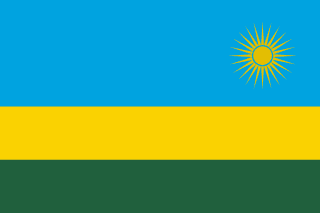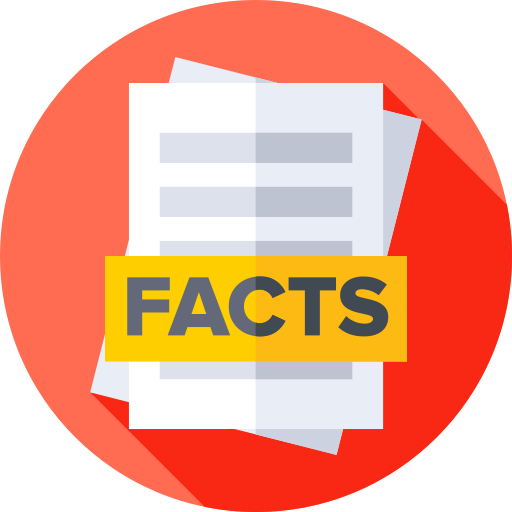Rwanda - Geography

Here, let us take a look at the Geography of Rwanda. Landlocked; most of the country is intensively cultivated and rugged, with the population predominantly rural. Mother's mean age at first birth is 23 years (2019/20 est.) (Note: data represents median age at first birth among women 25-49), whereas, the Maternal mortality ratio is 229 deaths/100,000 live births (2023 est.)
Geographical data of Rwanda
| Location | Central Africa, east of the Democratic Republic of the Congo, north of Burundi |
|---|---|
| Geographic coordinates | 2 00 S, 30 00 E |
| Map references | Africa |
| Tarrain | mostly grassy uplands and hills; relief is mountainous with altitude declining from west to east |
| Natural Resources | gold, cassiterite (tin ore), wolframite (tungsten ore), methane, hydropower, arable land |
| Natural Hazards | periodic droughts; the volcanic Virunga Mountains are in the northwest along the border with Democratic Republic of the Congo volcanism: Visoke (3,711 m), on the border with the Democratic Republic of the Congo, is the country's only historically active volcano |
| Irrigated Land | 96 sq km (2012) |
| Major rivers (by length in km) | Nile river source (shared with Tanzania, Uganda, South Sudan, Sudan, and Egypt [m]) - 6,650 km note: [s] after country name indicates river source; [m] after country name indicates river mouth |
| Major aquifers | |
| Land Boundaries | 930 km |
| Border Countries | Burundi 315 km; Democratic Republic of the Congo 221 km; Tanzania 222 km; Uganda 172 km |
| Coastline | 0 km (landlocked) |
| Climate | temperate; two rainy seasons (February to April, November to January); mild in mountains with frost and snow possible |
| Area | |
| Total Area | |
| Land Area | 24,668 sq km |
| Water Area | 1,670 sq km |
| comparative Area | slightly smaller than Maryland |
| Maritime Claims | |
| Elevations | |
| Highest point | Volcan Karisimbi 4,519 m |
| Lowest point | Rusizi River 950 m |
| Mean elevation | 1,598 m |
| Land Use | |
| Agricultural land | 76.3% (2023 est.) |
| Agricultural land: arable land | arable land: 47% (2023 est.) |
| Agricultural land: permanent crops | permanent crops: 13.7% (2023 est.) |
| Agricultural land: permanent pasture | permanent pasture: 15.6% (2023 est.) |
| Forest | 24.5% (2023 est.) |
| Other | 0% (2023 est.) |
Population Distribution
One of Africa's most densely populated countries; large concentrations tend to be in the central regions and along the shore of Lake Kivu in the west, as shown in this population distribution map
People and Society
In Rwanda, the different Ethnic groups are such that we have: Hutu, Tutsi, Twa
| Population | |
|---|---|
| Pop growth rate | 1.62% (2024 est.) |
| Birth rate | 25 births/1,000 population (2024 est.) |
| Death rate | 5.7 deaths/1,000 population (2024 est.) |
| Health expenditure | |
| Physicians Density | |
| Hospital bed Density | 0.7 beds/1,000 population (2020 est.) |
| Total fertility rate | 3.14 children born/woman (2024 est.) |
| Gross reproduction rate | 1.54 (2024 est.) |
| Contraceptive prevalence rate | |
| Est married women (ages 15-49) | 50.4% (2023 est.) |
| Literacy | |
| Education expenditures | |
| Net Migration rate | -3.1 migrant(s)/1,000 population (2024 est.) |
| Nationality | Rwandan | Rwandan(s) |
| Languages | |
| Religions | Christian 95.9% (Protestant 57.7% [includes Adventist 12.6%], Roman Catholic 38.2%), Muslim 2.1%, other 1% (includes traditional, Jehovah's Witness), none 1.1% (2019-20 est.) |
| Age Structure | |
| 0-14 years | 37.2% (male 2,561,884/female 2,508,218) |
| 15-64 years | 59.7% (male 3,954,608/female 4,179,844) |
| 65 years and over | 3.1% (2024 est.) (male 168,163/female 250,585) |
| Dependency Ratios | |
| Total dependency ratio | 67.5 (2024 est.) |
| Youth dependency ratio | 62.3 (2024 est.) |
| Elderly dependency ratio | 5.1 (2024 est.) |
| Potential support ratio | 19.4 (2024 est.) |
| Median Age | |
| Total | 20.8 years (2024 est.) |
| Male | 20.1 years |
| Female | 21.5 years |
| Urbanization | |
| Urban population | 17.9% of total population (2023) |
| Rate of urbanization | 3.07% annual rate of change (2020-25 est.) |
| Major urban areas (Pop) | 1.248 million KIGALI (capital) (2023). |
| Sex Ratio | |
| At birth | 1.03 male(s)/female |
| 0-14 years | 1.02 male(s)/female |
| 15-64 years | 0.95 male(s)/female |
| 65 years and over | 0.67 male(s)/female |
| Total population | 0.96 male(s)/female (2024 est.) |
| Infant Motality | |
| Total | 24.9 deaths/1,000 live births (2024 est.) |
| Male | 27.3 deaths/1,000 live births |
| Female | 22.5 deaths/1,000 live births |
| Life Expectancy at birth | |
| Total population | 66.6 years (2024 est.) |
| Male | 64.6 years |
| Female | 68.6 years |
| Drinking Water Sources | |
| Improved: urban | urban: 88.1% of population (2022 est.) |
| Improved: rural | rural: 60.1% of population (2022 est.) |
| Improved: total | total: 65.1% of population (2022 est.) |
| Unimproved: urban | urban: 11.9% of population (2022 est.) |
| Unimproved: rural | rural: 39.9% of population (2022 est.) |
| Unimproved: total | total: 34.9% of population (2022 est.) |
| Sanitation facility acess | |
| Improved: urban | urban: 91.4% of population (2022 est.) |
| Improved: rural | rural: 87% of population (2022 est.) |
| Improved: total | total: 87.8% of population (2022 est.) |
| Unimproved: urban | urban: 8.6% of population (2022 est.) |
| Unimproved: rural | rural: 13% of population (2022 est.) |
| Unimproved: total | total: 12.2% of population (2022 est.) |
| Alcohol consumption per capita | |
| Total | 6.35 liters of pure alcohol (2019 est.) |
| Beer | 0.23 liters of pure alcohol (2019 est.) |
| Wine | 0.03 liters of pure alcohol (2019 est.) |
| Spirits | 0.09 liters of pure alcohol (2019 est.) |
| Other alcohols | 6 liters of pure alcohol (2019 est.) |
| Tobacco use | |
| Total | 11.4% (2025 est.) |
| Male | 17% (2025 est.) |
| Female | 6.3% (2025 est.) |
| Child marriage | |
| Women married by age 15 | 0.3% (2020) |
| Women married by age 18 | 5.5% (2020) |
| Men married by age 18 | 0.4% (2020) |
Demographic profile
All Important Facts about Rwanda
Want to know more about Rwanda? Check all different factbooks for Rwanda below.









